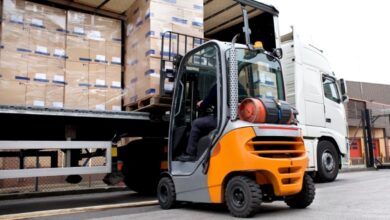
Moldy Pallet: What To Do for a Moldy Wooden Pallet
In the cavernous world of warehousing, wooden pallets are the silent heroes that underpin untold economies through the laborious demands of global supply chains. Yet, these sturdy wooden workhorses are not invincible. They are quite susceptible to a silent, creeping threat—mold. At this point, we discuss what to do for a moldy wooden pallet in your warehouse.
Identifying and Assessing Mold on Pallets
Before one can fight mold on pallets, one must first spot it. Mold might seem obvious once seen, but catching it early is crucial. A routine visual inspection should include checking for any discoloration or staining, particularly in damp areas where mold thrives. An unexpected, musty smell could also signal hidden mold and prompt a deeper investigation.
In assessing the extent of mold growth, the key is to act fast but not reckless. The decision on whether a pallet is salvageable or needs discarding depends on the depth of penetration and the present mold strain. Wooden pallets with surface mold are restorable, but when the damage is extensive, disposal may be the only safe course of action.
Properly Cleaning Wooden Pallets
Cleaning a mold-infested wooden pallet is a meticulous, multistep process. It involves removing the mold spores, killing the remaining fungi, and drying the pallet thoroughly to prevent future outbreaks. But how can this be done without resorting to harmful chemicals that contradict your business’s eco-friendly stance?
One effective method involves starting with a dry scrub to remove the visible mold, using tools like a stiff brush or a dry mop. Next, prepare a natural anti-fungal solution, such as a vinegar-water mixture, and apply it generously. Allow the pallet to bake in the sun before inspecting it for remaining mold, and repeat the process if necessary. These are the necessary steps to properly clean wooden pallets and prevent mold presence and growth.
Elevating Your Delivery Management
Beyond the meticulous act of cleaning lies the unsung hero of this war on mold: high-quality delivery management. Mold has a voracious appetite for moisture, and it often finds a feast on pallets stored in damp conditions or during prolonged shipping times. By fast-tracking orders and maintaining dry warehouses, businesses can drastically reduce the risk of mold growth on their pallets.
This isn’t just a strategy to avoid the problem but a concerted effort toward a sustainable supply chain. It reduces waste from discarded pallets and demonstrates a commitment to environmental responsibility that echoes throughout the entire delivery process. It’s a small pivot with immediate and long-term sustainable impacts.
Nurturing a Pro-Mold Environment
Prevention, as they say, is worth a pound of cure. Ensuring your warehouse atmosphere does not encourage mold growth can spare you the effort of what could otherwise be routine slogs through the aforementioned cleaning routine—or worse, the disposal of pallets. It begins by looking at where you store your pallets. Keeping them off the ground, storing them in a well-ventilated area, and avoiding excessive moisture can work wonders in minimizing the chances of mold infestation.
But even more critical is a cultural shift. By instilling the importance of mold prevention among your warehouse staff, you create a team of mold sentinels who will notice and address growing issues long before an invasion.
Understanding what to do for moldy wooden pallets might seem easy—toss it. But the reality is you don’t have to resort to waste. Clean your pallets, maintain shipping times, and nurture a mold-free environment.






